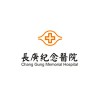
"Six-week Study of the Safety and Efficacy of JZP-110 in the Treatment of Excessive Sleepiness in...
Obstructive Sleep ApneaThis trial is a 6-week, double-blind, placebo-controlled, randomized-withdrawal, multicenter study of safety and efficacy of JZP-110 in the treatment of excessive sleepiness in adult subjects with OSA.

Morbidity in Patients With Hypertension and Obstructive Sleep Apnea
HypertensionSleep Apnea1 moreMORPHEOS is a multicenter, randomized, unblinded study, for patients diagnosed with uncontrolled hypertension and at least one antihypertensive medication. Those patients with significant sleep apnea wil be randomized to CPAP or nasal strips for 6 months.

Atomoxetine and Oxybutynin in Obstructive Sleep Apnea
Obstructive Sleep Apnea (OSA)Obstructive sleep apnea (OSA) is common and has major health implications but treatment options are limited. OSA patients show a marked reduction in upper airway (UA) dilator muscle activity at sleep onset and this phenomenon leads to increased collapsibility of UA compared to normal subjects. Until recently, the search for medicines to activate pharyngeal muscles in sleeping humans has been discouraging. However, exciting new animal research has shown that drugs with noradrenergic and antimuscarinic effects can restore pharyngeal muscle activity to waking levels. In this protocol the investigators will test the effect of atomoxetine (a norepinephrine reuptake inhibitor) and oxybutynin (an antimuscarinic drug) administered together on OSA phenotype traits and OSA severity during sleep.

Effect of Upper Airway Stimulation in Patients With Obstructive Sleep Apnea
Obstructive Sleep ApneaUpper Airway Stimulation is a new therapy, which is available for patients with obstructive sleep apnea, who are non-compliant to the standard treatment continuous positive airway pressure (CPAP) therapy. This study is a prospective, multi-center, double-blinded, randomized crossover study conducted under a common protocol. The study visits include baseline with an in-laboratory polysomnography (PSG) after six months of therapy usage, followed by visits and in-lab PSGs at 1 and 2-weeks where the Therapy stimulation will be changed at each, according to randomization. The objective of this randomized controlled crossover study is to assess treatment effect of Inspire UAS in patients at different time points with two different therapy settings. This study will provide additional clinical evidence of Inspire UAS for treatment of moderate to severe OSA using a randomized controlled crossover trial design.

The Effect of Trazodone on the Severity of Obstructive Sleep Apnea in Insomnic Stroke Patients With...
Sleep Apnea SyndromesCerebral InfarctionThe investigators hypothesize that trazodone does not worse nocturnal oxygen saturation in insomnic ischemic stroke patients with obstructive sleep apnea (OSA) and depression and has beneficial effect in selected stroke patients with low arousal threshold phenotype OSA.

Pharmacological Activation of HMN for OSA
Obstructive Sleep ApneaObstructive sleep apnea (OSA) is common and has major health implications but treatment options are limited. OSA patients show a marked reduction in upper airway (UA) dilator muscle activity at sleep onset and this phenomenon leads to increased collapsibility of UA compared to normal subjects. In this protocol the investigators will test the effect of LTM1201L, LTM1201LN, LTM1201LB, LTM1201LD administered before sleep on OSA phenotype traits and OSA severity during sleep.

The Evaluation of a Novel Nasal Pillows Mask for the Treatment of Obstructive Sleep Apnea
Obstructive Sleep ApneaThis investigation is a prospective, non randomized, non blinded study. This investigation is designed to evaluate the performance, comfort and ease of use with the F&P trial nasal pillows mask amongst Obstructive Sleep Apnea (OSA) participants.

Validity of a Vibrating Postural Device for the Treatment of Positional Obstructive Sleep Apnea...
OSAThe objective of the study is validity of the effectiveness of a vibrating postural device in reduce the respiratory events (Apnea-Hypopnea Index-AHI) in patients with positional Obstructive Sleep Apnea (OSA).

Effects of Rehabilitation for Patients With Obstructive Sleep Apnea
Obstructive Sleep Apnea of AdultIn previous review study, it was hypothesized that a comprehensive rehabilitation can combine both local pharyngeal muscle exercise and systemic cardiopulmonary rehabilitation for the OSA patients with oropharyngeal muscle dysfunction or ventilator drive instability. To develop a comprehensive rehabilitation model is of innovative care strategy in this study.

Intraoral Tongue Stimulation for Treatment of Primary Snoring
SnoringObstructive Sleep ApneaIntraoral Neuromuscular Training for Treatment of Snoring Objective Studies show that improving pharyngeal muscle tone can ameliorate obstructive sleep apnoea (OSA) and snoring. The study uses an intra-oral stimulation device (SnooZeal) aimed at a population of snorers. The aim of this study is to assess the efficacy of intra-oral neuromuscular stimulation training during wakefulness on snoring. Methods This is a prospective study, recruiting up to 200 patients from the sleep clinics. In this study, subjects will use the intra-oral stimulation device once a day for 20 minutes each time for a period of 6 weeks. During these 6 weeks, subjects will complete a daily diary of the device use and any side effects or adverse events. Partners also complete a daily snoring score. Subjects will be followed-up for a further 2 weeks after treatment. They will complete Pittsburgh Sleep Quality Index (PSQI) and subjective sleep quality questionnaires for a further 2 weeks. Partners will also complete the post treatment snoring scores. Sleep study will be repeated. Outcome measures The objective evaluation will be based on pre- and post-treatment sleep studies, visual analogue scale (VAS) snoring scores, PSQI and subjective sleep quality questionnaire. All side effects and adverse events will be reported and acted upon according to the risk management structure.
